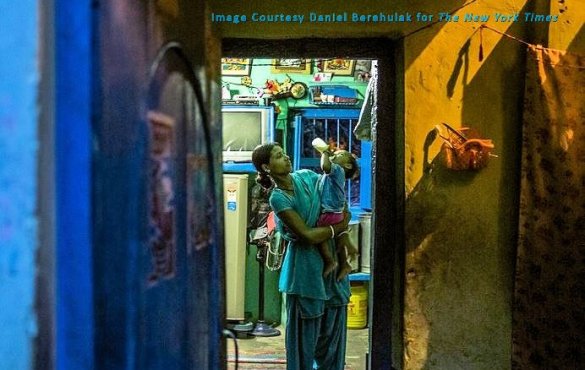Innovations in sanitation can be something as complex as self-contained waste recycling technology, or something as simple as a reusable cloth sanitary napkin.
Many of the innovations discussed in this series on sanitation are already in use in India. Some of them are just in the pilot phase; others have become integrated into the daily lives of city dwellers and rural villagers. While many strides have been made, millions of Indians every day are still negatively impacted by poor sanitation.
LEAF Society works every day to improve sanitation for Indians, particularly in rural Tamil Nadu. We recognize that not every innovation, no matter how theoretically promising, will fit every circumstance. We strive to educate people about hygiene and sanitation, and to help implement workable solutions to sanitation problems.
When it comes to sanitation solutions, the question shouldn’t be whether to go high-tech or low-tech. The question should be what is going to do the most for people in need.
– Brian Arbogast, “Innovations in Sanitation Come in All Shapes and Sizes”
No matter how useful a particular innovation might seem to be, it is particularly useless if those who need it the most cannot afford it.
Innovations in sanitation must be more than intellectual exercises. They are not about competition between inventors. They are not about integrating elaborate technologies into a toilet or a water purifier when it serves no practical purpose to do so.
Beyond the Millions
Statistics are often quoted about the millions who are affected by poor sanitation. The numbers are large and impressive, and meant to be impactful.
If you stretched all 774 million people in India now waiting for household toilets, the queue would stretch from Earth to the moon – and beyond! That queue would take 5,892 years to work through, assuming each person needs about four minutes in the toilet.
– WaterAid, It’s No Joke – State of the World’s Toilets
However, the astronomical numbers can disconnect us from the real people whose lives are impacted every day by poor sanitation.
Innovations in sanitation are not about millions of tonnes of waste, or even about the millions who don’t have a toilet.
Innovations in sanitation are about Sandeep, the young child who is malnourished because poor sanitation has made him continually ill—and left him with very little appetite.
They are about Shefali, the young woman who faces shame and chances infection because she lacks a clean place to properly wash her menstrual cloths—and lacks the freedom to dry them out in the open, where the sunlight can sanitize them.
They are about K. Vijaykant, the rag picker who is constantly exposed to diseases like Chikungunya, because tainted trash and mosquitoes are everywhere—and education and dignity are not.
Sanitation underpins the success of health, education and livelihoods, forming the first essential step in overcoming poverty.
India is 32 years behind schedule in attaining its sanitation goals and it could get much worse. With every year of delay, we are losing more children to illness, neglecting more girls and wasting more productive lives.
– Rati Forbes, Director at Forbes Marshall
Fulfilling the Promise of Innovation
Innovations in sanitation will never fulfil their promise unless we keep these people at the heart of our search for new inventions and technologies. Not as nameless, faceless millions whose comprise tragic statistics, but as individuals with very human stories. People whose lives have been made profoundly difficult by the consequences of poor sanitation, but people with as much importance and personal worth as those who invent revolutionary sanitation technologies.
What lies ahead for India and the developing world? Thinkers and inventors from all walks of life are already working to find the next great idea, the spark of genius that will solve seemingly insurmountable problems.
Add your spark of genius to this crucial discussion by sharing your comments below. Fire up the conversation on social media by sharing this series of posts. And if you feel inspired to get directly involved with improving sanitation in India, contact LEAF Society today!
Michelle Baumgartner is a freelance writer and editor. One of her current projects is an internship with LEAF Society. Michelle’s company, StellaWriting LLC, provides blogging, online content, and marketing materials for businesses and nonprofit organizations.





